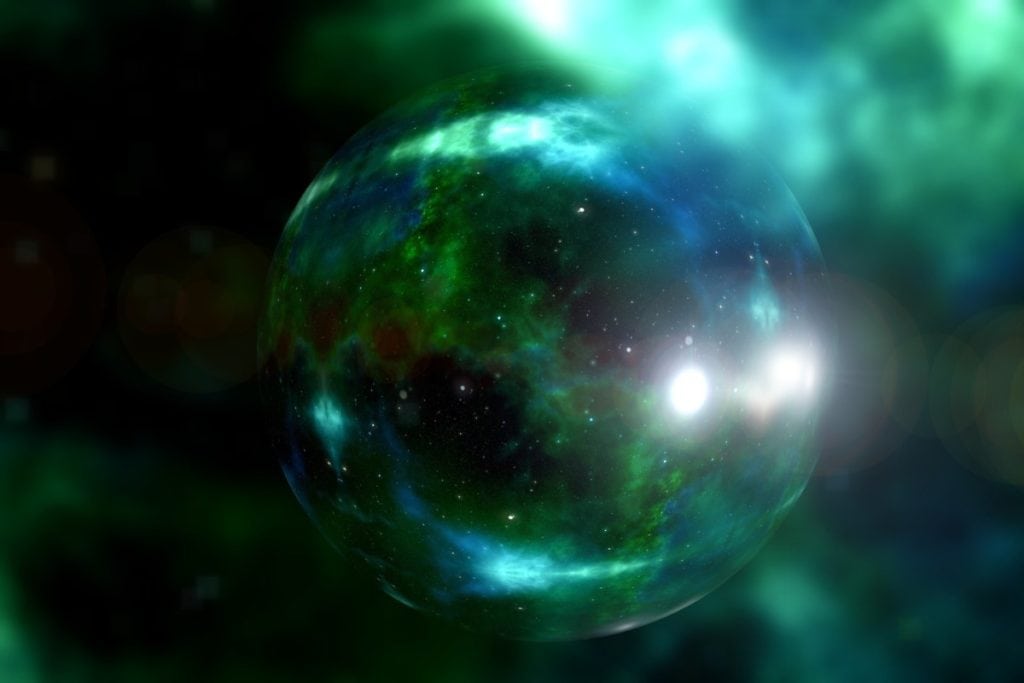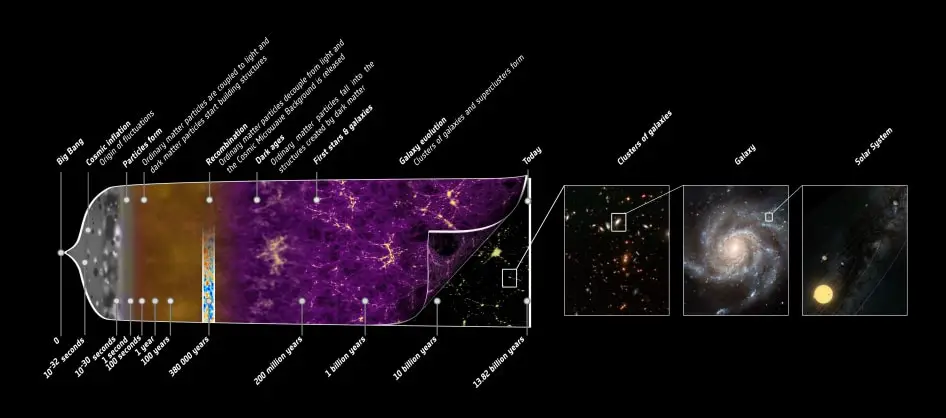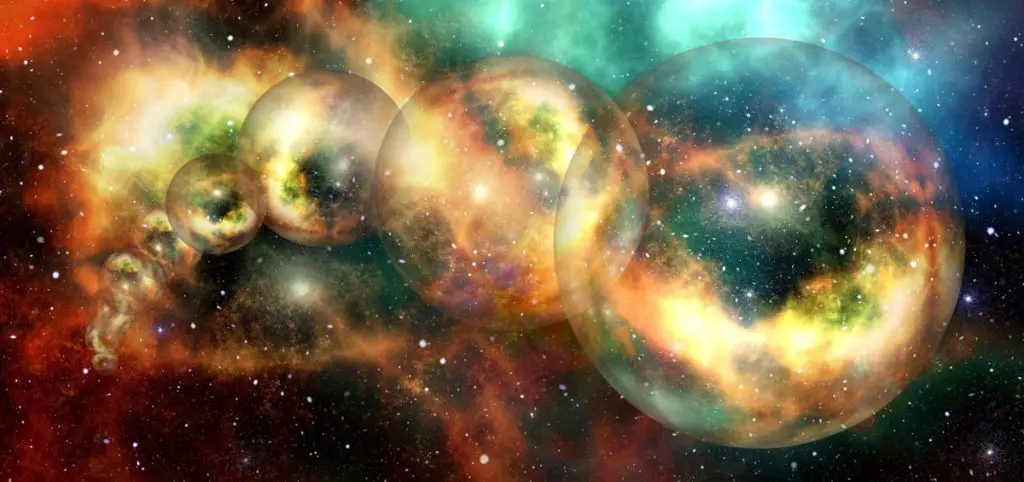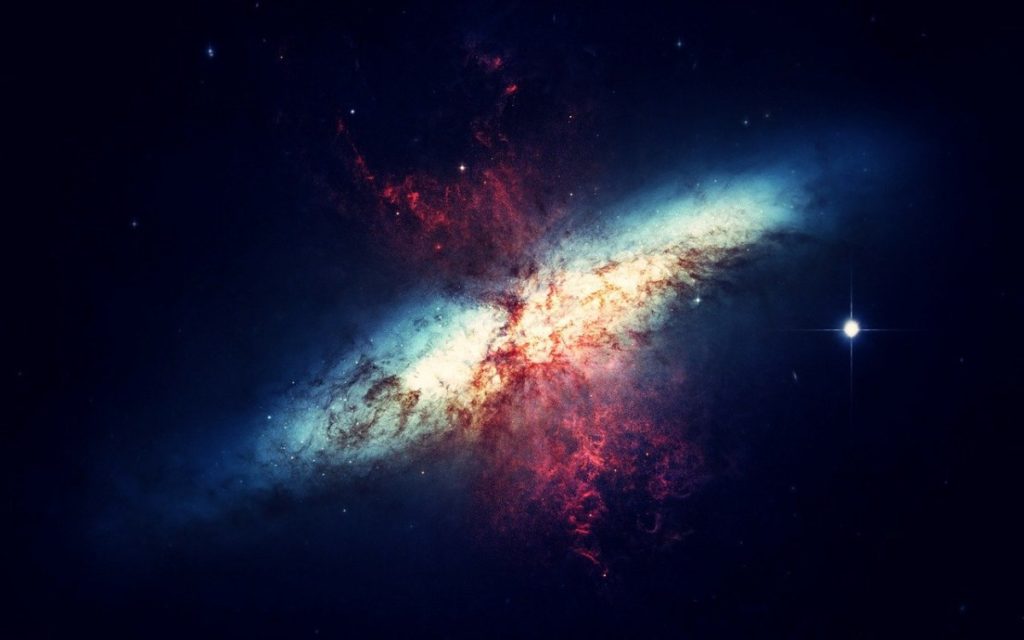
The multiverse is a finicky thing. We might have developed our understanding of the multiverse through a collection of Marvel movies, where alternate universes are born from time traveling and events with different possible outcomes. Although science cannot disprove such a fictional concept, it can’t very well prove it either. But, that has not stopped our particle physicists and cosmologists from digging for answers.
The multiverse theory suggests that there could be other universes disconnected from ours; although the nature of their existence is a highly debated topic, the motivations for such a concept comes from the claim that the “multiverse” is (1) the inevitable outcome of the physical process that generated our own universe; (2) an explanation for why our universe appears to be fine-tuned for life and consciousness; (3) the result of the philosophical stance that “everything can happen in physics does happen”.
Such differing schools of thought give rise to multiverses that exist under many contexts, which we will examine thoroughly in the article below.
The Inflationary Multiverse
The idea of a multiverse has raised deep conceptual issues, as our recent scientific progress has changed our view of the universe and our view of the nature of science itself [1]. This change in perspective has led the scientific community to accept that a multiverse concept has explanatory value. Still, they hesitate on whether it should be regarded as legitimate science.
Nonetheless, this did not stop the scientific community’s enthusiasts from proposing their own version of where the multiverse is and how the multiverse came to be.

Image by NASA
As most cosmologists have come to accept the Big Bang theory and inflationary cosmology, our observable universe is limited by how much the universe has expanded and the distance light has traveled since the Big Bang (~42 billion light-years). Some might use this to define our universe’s edge or horizon; however, it is equally absurd to assume that nothing exists in what we cannot see. There still might be unobservable infinitely expanding domains part of our Big Bang [1].
The best way to describe the multiverse would be a cosmologists’ educated guess about what the rest of our universe looks like.
What are the Different Levels of the Multiverse?

Max Tegmark [2] categorized the multiverse theory into four levels, with the first two involving the inflationary multiverse. The following introduces the random quantum process and a multiverse outside the realm of space and time.
Level 1 Multiverse
The Level I multiverse is the simplest type of a parallel universe theorized, which describes a region of space that is too far away for us to have seen. However, this is only probable if space was indeed infinite.
There are many schools of thought behind the nature and topology of space, but let’s consider this – is there was a sign that says: “Space Ends Here-Mind the Gap”? And if so, what might lay beyond it?
The infinite or finite nature of space has been called into question by Einstein through his theory of gravity, where a finite nature would be probably if space existed with an interconnected topology (ex. spherical, doughnut, or pretzel-shaped universe), which would have a limited volume and no edges.
Fortunately, the cosmic microwave background radiation allowed sensitive tests to examine the probability for both scenarios. And so far, the evidence has been stacking in favor of the infinite model.
All individuals residing in a Level I parallel universe would experience the same laws of physics as we do, but with different initial arrangements of matter. Current theories suggest that the Big Bang spread matter around in its early phases with a certain degree of randomness but generated all possible arrangements with a nonzero probability.
If all predictions come true, within these infinitely expanding domains beyond our cosmic horizon, everything that is possible becomes real. The logical conclusion would lead to identical regions of space with the same arrangement of matter that would contain our identical clones or alter egos.
The distance from our universe to such a duplicate universe would also not be hard to calculate.
Imagine a two-dimensional universe with space for four particles, such a universe has 24, or 16, possible arrangements of matter. If more than 16 of these universes exist, they must begin to repeat. In this example, the distance to the nearest duplicate is roughly four times the diameter of each universe.
Max Tegmark [2]
We can apply the same argument to our universe, which has space for approximately 10118 subatomic particles. By counting all quantum states that a Hubble volume can have if it is no hotter than 108 kelvins, the number of possible arrangements is 2 to the 10118 [2]. Multiplying by our universe’s diameter, a box containing such a Hubble volume would span an average distance of 10 to the 10118 meters across, which is where our nearest duplicate would be found. Unfortunately, as cosmic expansion is accelerating, it may not be possible for us ever to see our alter egos.
Despite such a bizarre possibility, this is the least controversial of the two levels as humans can all “accept the existence of things we cannot see but could see if we moved to a different vantage point or merely waited, like watching for ships to come over the horizon” [2].
Level 2 Multiverse
The Level II Multiverse can be imagined to be an infinite set of distinct Level I multiverses with different laws of physics (physical constants) and spacetime dimensionality. This is also why the Level II multiverse is the more controversial of the two inflationary theories in the scientific community… it breaks our common knowledge physics!
Predictions for a Level II multiverse were the result of the currently popular theory of chaotic eternal inflation. This theory’s premise rests on the infinite stretching of space as a whole, but the phrase “chaotic eternal” brings a different aspect to the story.
During the process of inflation, “some regions of space stops stretching and form distinct bubbles” [2]. Each of these infinite numbers of bubbles emerges as an “embryonic Level I multiverse: infinite in size and filled with matter deposited by the energy field that drove inflation” [2].
Unlike the Level I multiverse, the distance to these bubbles cannot be calculated as they are more than infinitely far away from Earth. They also cannot be reached as the distance between our bubble and its neighbors is expanding faster than we can travel through it, even if we traveled at the speed of light forever.
Such diversity of a Level II multiverse is the outcome of a process called symmetry breaking. Theorists thought that the space in our universe once had nine dimensions on all equal footing. Unfortunately, three of them partook in cosmic expansion during early cosmic history to become what we observe today, while the other six are now unobservable.
As such, the different qualities of elementary particles and dimensionality of spacetime result from the symmetry break of the original nine dimensions within each bubble:
The quantum fluctuations that drive chaotic inflation could cause different symmetry breaking in different bubbles. Some might become four-dimensional, others could contain only two rather than three generations of quarks, and still others might have a stronger cosmological constant than our universe does.
Max Tegmark [2]
Other ways of producing a Level II multiverse have been suggested, which involves a model that presents a second three-dimensional brane (space) literally parallel to ours. But this space is not really considered a separate universe as its only interaction is with the brane that we live in. The ensemble of the past, present, and future between these two branes would form a multiverse that is quite similar in diversity to one produced by eternal chaotic inflation.
The physicist, Lee Smolin of the Perimeter Institute in Waterloo, Ontario, introduces another process of producing multiverses comparable in diversity to a Level II multiverse – the new universes are formed through black holes rather than brane physics.
Level 3 Multiverse
The Level III Multiverse differs from the first two levels as it no longer takes into account the inflationary nature of space, but rather the “many-worlds interpretation of quantum mechanics – the idea that random quantum processes cause the universe to branch into multiple copies, one for each possible outcome” [2].
This interpretation of the multiverse is famous and famously controversial. It is the interpretation of the multiverse to which we have come to know and love as part of the Marvel cinematic universe.
To understand the Level III multiverse, I have to introduce the quantum mechanics theory that revolutionized physics by providing an explanation for the atomic realm. Within this realm, quantum mechanics specified the universe’s state, not in the classical terms – a particle is defined by its position or velocity – but expresses it in terms of a mathematical object called a wave function [2].
According to the Schrödinger equation, the wave function evolves in a “unitary” fashion, where it rotates in an abstract infinite-dimensional space called Hilbert space. This is an important concept as quantum mechanics is often known to be random and uncertain. However, the wave function’s unitary nature allows the universe to evolve in a deterministic way, which means there is certainly nothing random about its branching and evolution.
The Schrödinger’s cat paradox was used to demonstrate both sides of the idea, where the cat is both dead and alive in a superpositioned state until it can be observed – a conclusion reached as a result of the supposed inherent random nature of quantum mechanics. Such an uncertain conclusion for the life or death of Schrödinger’s cat turned the unitary theory of the wave function into a nonunitary one [2].
That is until 1957 when the Princeton graduate student Hugh Everett III theorized that the quantum theory did not have to “collapse” to satisfy the unitary deterministic evolution of the wave function, that Schrödinger’s cat did not have to be dead or alive, one or the other, but that in its unobserved state, our classical reality simply split into superpositions of many different classical realities.
The superposition of classical realities/worlds as a result of different possibilities is the Level III multiverse.
Like the Level I and II multiverse, parallel worlds of the Level III multiverse cannot be seen by observers of their own world. The difference between them is not because of distance but a process called decoherence.
To understand decoherence, we must distinguish between two perspectives viewing the unitary wave function from a physical standpoint. Tegmark describes the wave function as [2] – “the outside view of a physicist studying its mathematical equations, like a bird surveying a landscape from high above it, and the inside view of an observer living in the world described by the equation, like a frog living in the landscape surveyed by the bird.”
Only one wave function describes the Level III multiverse from the bird’s perspective, but within this function are evolutions of many parallel classical storylines that continuously splits and merges. As the bird sees it, the act of making a decision causes an observer (a person) to split into multiple copies representing all their possibilities.
From the frog’s perspective, observers can only perceive its own classical world and view its own universe. The decoherence process, which mimics the collapse of the wave function, preserves its unitarity by preventing an observer from seeing Level III parallel copies of itself. As the frog sees it, an observer will not notice its alter egos but merely recognize the possibility for the decisions they could have made as slight randomness in their life with a certain probability.
Certainly, this exact situation may also occur in a Level I multiverse, where a copy of yourself made the choice that you decide to omit, except that they reside somewhere far away in three-dimensional space, whereas your alter ego in a Level III multiverse lives in another quantum branch in an infinite-dimensional Hilbert space.
Level 4 Multiverse
It is easy for us to just dream up different types of universes and worlds, where even the fundamental laws that govern nature is different, but their existence essentially hinges on the relationship between abstract reasoning and observed reality.
This might lead one to think, what is our observed reality? Or rather, what makes up our observed reality? To answer this question, max Tegmark proposed that the Level IV Multiverse’s parallel worlds exist based on different mathematical structures – where every mathematical structure corresponds to a parallel universe [2].
Such a concept might be very confusing at first, but it is not all that complicated once we really think about it.
The physicist Eugene P. Wigner in a famous 1959 lecture, argued that “the enormous usefulness of mathematics in the natural sciences is something bordering on the mysterious.” Mathematics is an objective existence where they remain the same no matter who studies them, whether it be humans, a computer, an alien civilization, or an intelligent dolphin [2].
With such power in our hands, how we use this mathematical structure to see the world is completely up to us.
To understand this process, Tegmark explored schools of thought by Plato and Aristotle that argued the relationship between mathematics and physics.
The Aristotelian paradigm suggests that our physical reality is fundamental, and the mathematical language is only used to explain the reality via approximations.
Comparably, the Platonic paradigm suggests that the mathematical structure is our true reality. Thus, the way we perceive our physical world is imperfect, as we cannot fully comprehend the mathematical structure as a whole.
The two paradigms essentially argue over what our physical reality is built upon, whether it be the Aristotelian perspective (the frog) or the Platonic perspective (the bird). The frog would use Newton’s law of motion and gravitation to explain an apple’s trajectory when it falls off the tree. In contrast, the bird would observe such laws as simple mathematical structures.
How one would like to view the world is completely subjective, but Tegmark remarks [2]:
Modern theoretical physicists tend to be Platonists, suspecting that mathematics describes the universe so well because the universe is inherently mathematical … a mathematician with unlimited intelligence and resources could in principle compute the frog perspective – that is, compute what self-aware observers of the universe contains, what they perceive, and what languages they invent to describe their perceptions to one another.
Either way, Tegmark observes the Platonic paradigm and refers to a mathematical structure as “an abstract, immutable entity existing outside of space and time” [2]. Although with such a thought, a fundamental problem seems to appear [2] – “If the universe is inherently mathematical, then why was only one of the many mathematical structures singled out to describe a universe?”
The solution to this puzzle brings us back to the Level IV multiverse. If all mathematical structures can exist physically, then every mathematical structure would correspond to a parallel universe! Unfortunately, the likelihood of finding our alter egos within a parallel universe is slim, as they exist outside of space and time, and most of them are probably devoid of observers (people) [2].
Understandably, this hypothesis is much of a far stretch as even Tegmark refers to it as a form of radical Platonism. But at least the Level IV multiverse brings to close the hierarchy of multiverses, as any other “self-consistent fundamental physical theory can be phrased as some kind of mathematical structure” [2].
Does the multiverse really exist?

Well-respected physicists and cosmologists have presented many hypotheses and theoretical arguments for the existence of multiverses, and the four levels discussed above are only the tip of the iceberg.
But with that said, many have also opposed the multiverse’s existence as “the very nature of the scientific enterprise is at stake” [1]. George Ellis of the University of Cape Town criticized those who pursued the multiverse theory in a cosmological and theoretical physics context, as there has been an increasing tendency to ignore whether a proposal is testable, with the thought that if a proposal convincingly fits into their theories, with great explanatory power, then testing is superfluous/unnecessary [1].
Although testing is considered needless by some, experimental measures to gather evidence for the existence of a multiverse under different scenarios have been conducted. Like previously mentioned, the “cosmic microwave background radiation might bear some traces of other bubble universes – if our universe has somehow collided with another bubble as part of the eternal chaotic inflation (Level II Multiverse) scenario”; or the background radiation might contain remnants of universes that existed before the Big Bang in a scenario with an endless cycle of universes [3].
But to no avail, as the two central scientific virtues are testability and explanatory power, Ellis pressed on to examine such empirical tests for parallel universes and has continued to disprove their credibility.
The evidence gathered by astronomers through observational tests to look for variations in one or more fundamental constants, which would have proved that the laws of physics are not so unyielding after all, have been refuted by Ellis by a claim that “most consider the evidence dubious” [3].
Another test to measure the shape of the observable universe, on whether it is spherical (positively curved), hyperbolic (negatively curved), or “flat” was pointed out to be inconsistent by Ellis, as multiverse scenarios generally predict that the universe is not spherical as it only allows for finite volume, but not all multiverse theories rule out a spherical geometry [3].
Ellis suggested that a better test is to observe the universe’s topology: Does it wrap around like a doughnut or pretzel? [3] If proved, its finite volume would refute inflation as well as most versions of inflationary multiverses. Such a topology would produce recurring patterns in the sky, which we have looked for and failed to find. But Ellis states again this cannot be taken as a point in favor of the multiverse.
So… does the multiverse exist? With everything considered, the answer is very subjective.
Most multiverse proposals are ideas sewn together rather than a coherent whole. Referring back to the idea of the multiverse theory as a “cosmologists’ educated guess about what the rest of our universe looks like“, our answer to justify the existence of the multiverse comes from the extrapolation of the known to the unknown [3]. What we get out of it depends on what we choose to extrapolate.
I think Ellis concludes this discussion very well [3]:
The contemplation of the multiverse is an excellent opportunity to reflect on the nature of science and the ultimate nature of existence: why we are here. It leads to new and interesting insights, and so is a productive research program … we need an open mind, though not too open … Parallel universes may or may not exist; the case is unproved. We are just going to have to live with that uncertainty.
References
- Carr, B., & Ellis, G. (2008). Universe or multiverse? Astronomy & Geophysics, 49(2), 2.29-2.33. https://doi.org/10.1111/j.1468-4004.2008.49229.x
- Tegmark, M. (2003). Parallel Universes. Scientific American, 288(5), 40–51. https://doi.org/10.1038/scientificamerican0503-40
- Ellis, G. F. R. (2011). Does the Multiverse Really Exist? Scientific American, 305(2), 38–43. https://doi.org/10.1038/scientificamerican0811-38
